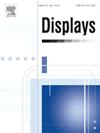SPFont: Stroke potential features embedded GAN for Chinese calligraphy font generation
IF 3.7
2区 工程技术
Q1 COMPUTER SCIENCE, HARDWARE & ARCHITECTURE
引用次数: 0
Abstract
Chinese calligraphy font generation is an extremely challenging problem. Firstly, Chinese calligraphy fonts have complex structures. The accuracy and artistic quality of the generated fonts will be affected by the order and layout of the strokes as well as the relationships between them. Secondly, the number of Chinese characters is large, but existing calligraphy works are scarce. Hence, it is difficult to establish a comprehensive and high-quality Chinese calligraphy dataset. In this paper, we propose an unsupervised calligraphy font generation network SPFont. It is based on a generative adversarial network (GAN) framework. The generator includes a style feature encoder, a content feature encoder, a stroke potential feature fusion module (SPFM) and a decoder. The SPFM module, by overlaying lower-level style and content features, better preserves fine details of the font such as stroke thickness, curve shapes and other characteristics. The SPFM module and the extracted style features are fused and then fed into the decoder, allowing it to consider the influence of style, content and stroke potential simultaneously during the generation process. Experimental results demonstrate that our model generates Chinese calligraphy fonts with higher quality compared to previous methods.
SPFont:用于生成中国书法字体的嵌入笔画潜力特征的 GAN
中国书法字体生成是一个极具挑战性的问题。首先,中国书法字体结构复杂。笔画的顺序和布局以及它们之间的关系会影响生成字体的准确性和艺术质量。其次,汉字数量庞大,但现有的书法作品却很少。因此,很难建立一个全面而高质量的汉字书法数据集。本文提出了一种无监督书法字体生成网络 SPFont。它基于生成对抗网络(GAN)框架。生成器包括风格特征编码器、内容特征编码器、笔画潜在特征融合模块(SPFM)和解码器。SPFM 模块通过叠加较低级别的样式和内容特征,能更好地保留字体的细节,如笔画粗细、曲线形状和其他特征。SPFM 模块和提取的风格特征融合后输入解码器,使其在生成过程中同时考虑风格、内容和笔势的影响。实验结果表明,与之前的方法相比,我们的模型生成的书法字体质量更高。
本文章由计算机程序翻译,如有差异,请以英文原文为准。
求助全文
约1分钟内获得全文
求助全文
来源期刊

Displays
工程技术-工程:电子与电气
CiteScore
4.60
自引率
25.60%
发文量
138
审稿时长
92 days
期刊介绍:
Displays is the international journal covering the research and development of display technology, its effective presentation and perception of information, and applications and systems including display-human interface.
Technical papers on practical developments in Displays technology provide an effective channel to promote greater understanding and cross-fertilization across the diverse disciplines of the Displays community. Original research papers solving ergonomics issues at the display-human interface advance effective presentation of information. Tutorial papers covering fundamentals intended for display technologies and human factor engineers new to the field will also occasionally featured.
 求助内容:
求助内容: 应助结果提醒方式:
应助结果提醒方式:


